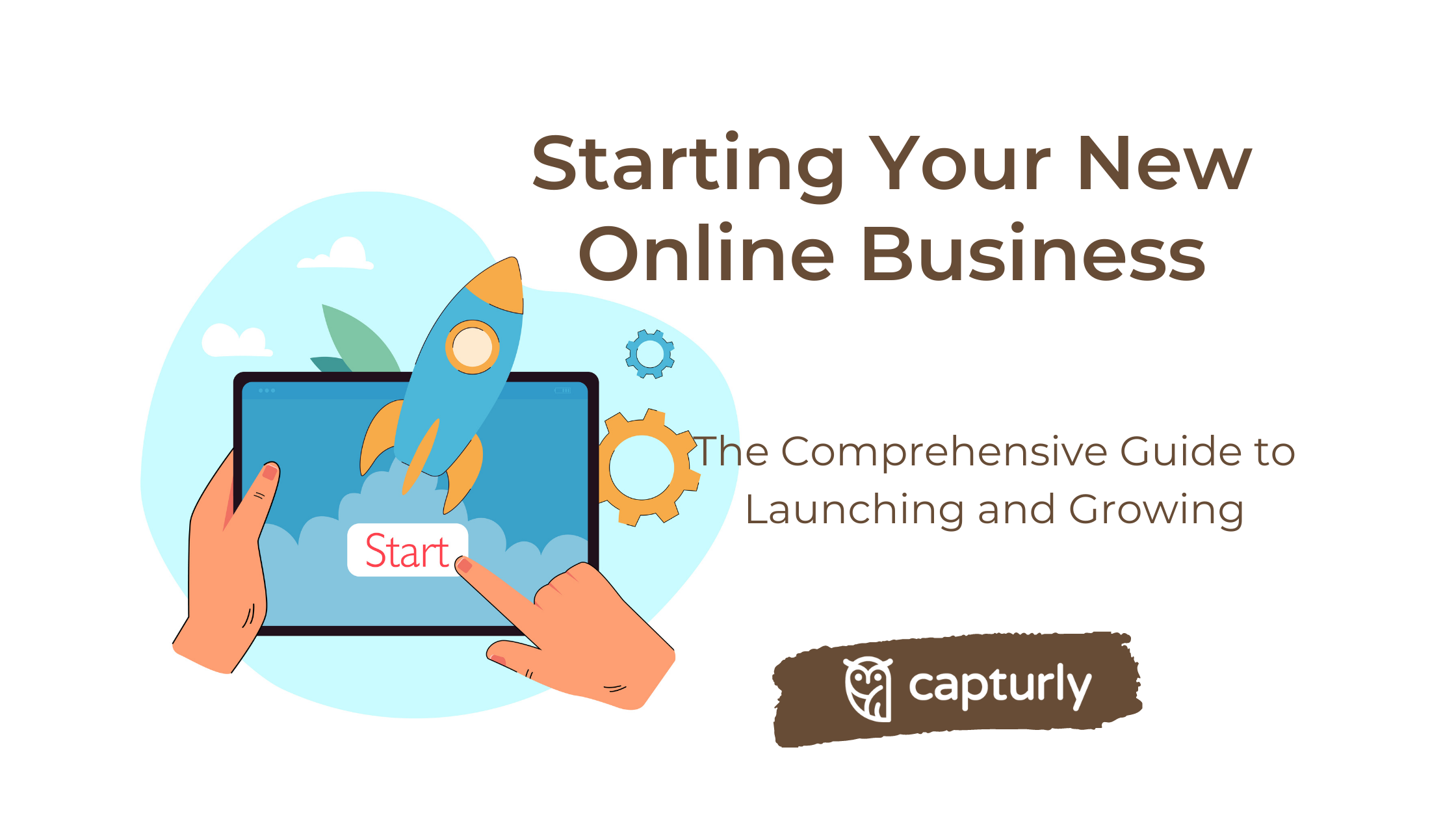Table of Contents
Introduction
If you’re currently thinking of stepping foot in the booming online business, you’re not alone. With 2.14 billion buyers in 2021, this is a thriving market for providers. But before you jump in and invest a sizable portion of your investment in setting up a shop, you must know that customers also want the best in the market. For that, consider exploring a new idea that has a future scope. An existing business idea can also open new avenues to start a new business because it has an audience.
When you start working on your business idea, take time to identify your motivators, build a strategic plan, and validate the idea. Like all business ideas, challenges are inevitable. Consider our list of things to watch out for when launching and growing your business.
But first, let’s see which idea works–a new business idea or an existing one?
Business ideas don’t have to be groundbreaking

Anyone can start an online business, but not all can achieve break-even or make it profitable. That’s because they have either not carried out due diligence on the market and the audience, or they fear competition in the market.
Those who choose to take up a new business idea face the challenge of a non-existent market for it. It’s vital to create awareness and educate your audience. And if you ignore it, the chances of failure are higher.
On the other hand, some people prefer to choose an existing business idea. But they tend to get discouraged by competition. But competition also means there is an existing audience base, and others have charted the course for you.
Regardless of your choice of starting an online business with a new idea or an existing one, remember to keep your ‘why’ or your ‘motivators’ at the forefront of what you do. This will stand in good stead, especially when you’re faced with unexpected business challenges and unforeseen escalating costs that can question your business choices.
Identify your Business Motivators
You could be searching for personal meaning in your business, or you may want to scale new heights with your online business. Either way, your business motivators are crucial and form the focal point from where you take all your business decisions. Consider these points before you pick your business motivators:
Freedom of time: If a set and forget system is on your mind, then consider the freedom of time as your primary motivator. You may probably put in long hours at the start of your online business. And then later, it’s all about setting up systems to automate most processes and give you the luxury of time to pursue other interests.
Earning Potential: If you believe in the power of unlimited business earning potential as your primary motivator, then explore a business idea instead of working as an employee. Of course, like all things, consider the pros and cons before you take the plunge and invest your savings in a business.
The topic of interest: Creating new and innovative products may be your idea of working for yourself. Here, keep your passion for new products at the center of your business decisions. This way, your business focus will primarily be on delivering excellent products at all times.
Long-Term Business Potential: If revenue generation excites you, then consider a profitable business as your motivating agent. While it’s a good business yardstick, it also factors in experience and instinct to take you through equally tough business decisions.
Once you identify your motivators, move on to build a strategic plan to map out your audience and the marketing channels to communicate with them.
Build a Strategic Plan
Draw up a strategic plan that clearly identifies your audience and how your business proposes to help them with their pain point. Have a clear idea of the products and services that can solve this pain point and work backward. How do you plan to address these pain points, and what marketing channels can help you spread the message about your business and its offerings?

Audience
Prepare a customer persona that mimics your audience type. Detail it further with their specifications, like gender, likes, dislikes, work information, preferences, and brand usage. Map these to their primary pain points that are not met entirely or adequately by competition.
Pain Point
Identify a few pain points you’d like to address with your product. If your business plan provides eCommerce services to retail customers, then identify how your business can compete with other retailers serving the same audience. Maybe their products aren’t good enough, or they lack customer support to take their business ahead.
Work on these gaps in the market and position your service as an alternative to these existing services. This way, you will compete in an existing market and meet the market’s need for a better product or service.
Addressing the Pain Point
Pain points could be from a product perspective, people, or price angle. Identify which pain points your business will solve well and outshine the competition. This way, you are not churning out a similar product like those already in the market.
If your product has a better market fit than existing ones, then position your business as one with a better product. If there’s a gap in support, i.e., human resources, support, or sales team, then project your business as the ideal one to work with. And if it’s the price you’re competing with, let pricing be your selling point in all your messaging. Once you identify this pain point, stick to it consistently, enforcing your brand positioning at all touchpoints.
Change in user behavior
While all market-fit solutions might address a pain point, be careful when putting your business at risk if it involves changing human behavior. E.g., Let’s say your product is about premium jewelry for office wear.
Unless you’re targeting the right audience, you might assume your audience will embrace this concept even though it’s not a part of their routine. Instead, you might repel a section of your audience that finds it strange to follow suit.
Think twice if your business involves changing user behavior. It’s a red flag, and it might go in your favor, but in that bargain, you might have to invest sufficient funds to educate and create an awareness of your product before you get any returns on your investment.

Marketing Channels
Find online marketing channels where your audience resides and start creating content to ‘talk’ about how your business meets their pain points. Consider inbound marketing if your business idea exists in the market. This way, there already is a demand for it leading people to your content.
Alternatively, for a new business idea, consider outbound marketing that relies on outreach, since people aren’t aware of what you have to offer.
A 3 Step Process to Validate Your Idea

Implement the strategic plan by validating your idea with an MVP, a customer acquisition plan, and a feedback loop that allows you the flexibility to rework the loopholes in your idea and fix them.
Build the Product
Don’t build the complete product and then test it in the market. This way, you’ll be spending a significant chunk of your investment on an untested product that might not work. Instead, build the product using no-code tools or low-cost MVPs to solve the pain point.
Check whether MVP meets the criteria so that it actually solves the pain point. Without solving the pain point, your MVP may not tell you whether or not your idea works.
Create Customer Acquisition Plan
Once your MVP is ready, create a customer acquisition plan. Expand on your marketing channel as per your strategic plan and pick the best-suited one to meet your marketing goals. If you choose inbound, use your website to attract traffic and get leads. Build on it using webinars or podcasts to attract like-minded audiences to your business.
If you chose outbound, then use PPC or cold email outreach to increase the chances of being found by your audience. In your cold email outreach, link out to your landing pages. This way, you can track the impact of your outreach and monitor conversions rates of your landing page and how this is impacted by your landing page, outreach message, and result of your marketing campaign.
Feedback Loop
Success in the first iteration is rare. In this case, understand what’s breaking the system, fix it and repeat the process. You may have to go through many iterations until you get to a working product that performs as your customers want it to. Look at generating a constant stream of Google reviews to have a pulse on what’s going wrong, and what is it that you are doing right.

Things to Watch Out For
Trends and patterns keep changing, and so does their impact on your business. Always keep monitoring the new trends in your industry and how they impact your business and pivot accordingly. At the same time, keep an eye on things that can escalate quickly, often threatening your business’s existence.
Costs/Finances
Not all investments are risk-free. And those that come with risks can drain your business investment to an extent it affects your bottom line. Consider the primary investment you need to get your MVP out and tested. Also, factor in additional costs for unforeseen circumstances. Once your MVP is a success and ready to go full-fledged, consider the market’s regulations.

Regulations
Watch out for regulations in your industry and how they can impact your business. Cannabis was recently approved in the US, and a lot of startups have emerged in this industry. However, launching a startup in this industry may be tough since not all shopping platforms, payment gateways, credit card machines, etc., permit these businesses on their platform.
Insurance
Secure your business with the right business insurance. Ensure your assets–financial and physical are protected from risks. Also, factor in intellectual property in case of innovations or new product development. Also, consider product liability in the case of an eCommerce business. This covers your business in case of an unlikely event.
Registration
Registration allows your company to build trust and credibility among your customers. You can also avail tax benefits. This way, you can protect your business interests with limited liability. However, remember that it also comes with additional paperwork that might require more resources to maintain. And there is no personal ownership, and it requires strict adherence to the rule book.
Risks
Starting a business comes with financial as well as resource risks. There is a high chance of failure at any stage of the business. It’s also likely certain decisions might not go in your favor and might stretch your resources thin, draining your budgets further.
Bootstrapped-Hire Freelancers
If you are bootstrapped and not sure about the success of your idea, defer one establishing a company or hiring employees, etc. Instead, try working with freelancers since it’s easy to hire and fire this way. This way, you can control your costs and manage your resources accordingly.
Conclusion
Starting an online business requires a clear understanding of the path you’d like to take. It begins by knowing whether a new business idea is worth pursuing or whether an existing business idea would work well. Then identify the motivators that can help you make business decisions. Your ‘why’ will dictate your choices, and based on it, a business strategy that includes knowing your audience, the pain point, and how your solution can act as a remedy by communicating via your marketing channels.
Once your strategic plan is in place, use an MVP to test it and use your preferred customer acquisition channels to test the MVP beyond one iteration. The feedback loop will then complete the validation cycle to launch a product in the market. But make sure to control costs, keep aside budgets for unforeseen events, factor in regulations, risks, and insurance to protect your business interests. And if setting up a bootstrapped company is your desired path, hire freelancers to get your business going without additional liabilities.
Don't forget, sharing is caring! :)

